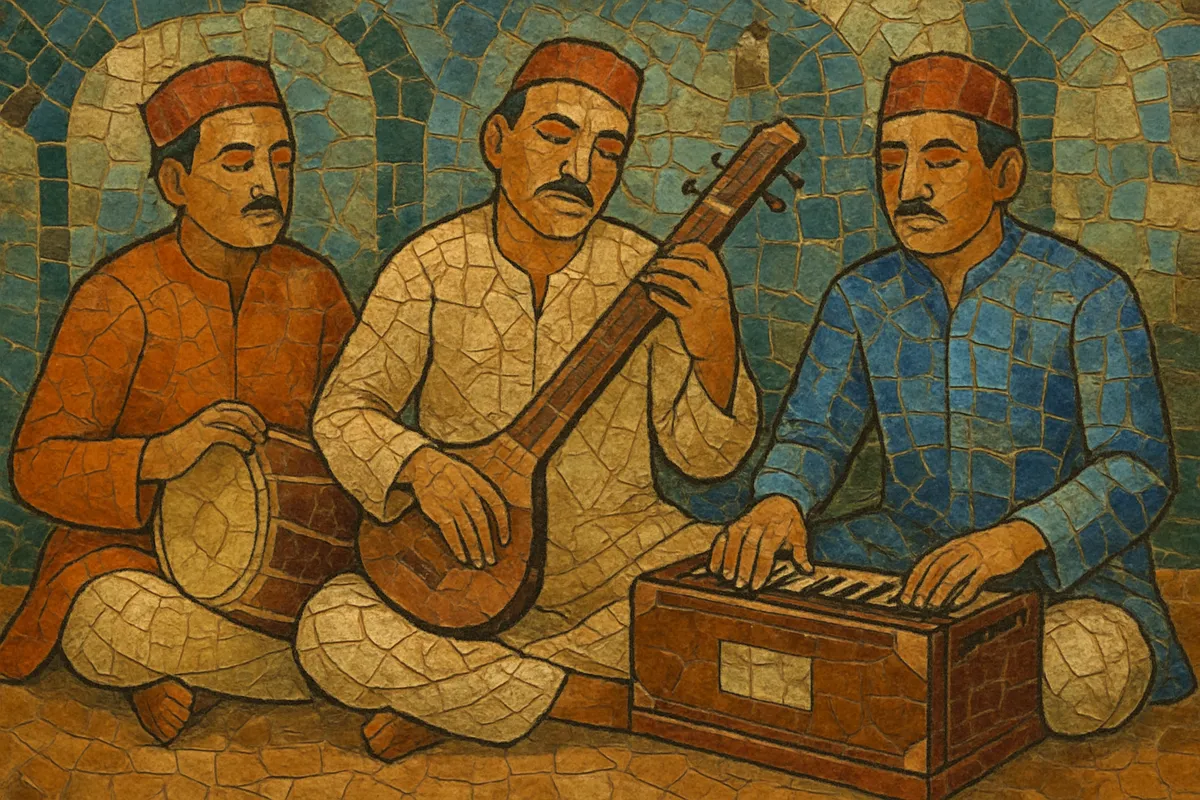Baithak gana is an Indo-Caribbean folk-pop tradition rooted in the Bhojpuri musical culture brought by Indian indentured laborers to Suriname. The name literally means “sitting songs,” reflecting its intimate, living-room performance setting.
Typical ensembles feature harmonium (melody), dholak (hand drum), and dhantal (metal rod and striker) driving cyclical dance rhythms. Lyrics are usually in Sarnami Hindustani (a Caribbean Bhojpuri/Hindi dialect) and revolve around weddings, teasing/playful love songs, life-cycle rites, Holi/Phagwa seasons, and community celebrations.
Stylistically, baithak gana blends North Indian light-classical and devotional idioms with Bhojpuri village song forms, later absorbing film-song sensibilities and Caribbean performance dynamics. It remains a vibrant soundtrack for Indo-Surinamese social life at home and across the Surinamese–Dutch diaspora.
Between 1873 and 1916, North Indian (largely Bhojpuri-speaking) indentured laborers were brought to Suriname. They carried with them village song repertoires (sohar, kajri, chowtal, wedding songs), devotional bhajan/kirtan practices, and light-classical tastes (e.g., thumri). In domestic “baithak” gatherings—literally, sitting rooms—these musics coalesced into a local practice later called baithak gana.
By the mid-1900s, a recognizable trio core—harmonium, dholak, dhantal—had stabilized. Repertoires were tailored to life-cycle events and communal festivities, with call-and-response singing, improvised refrains, and danceable theka patterns (often keherwa/8-beat and dadra/6-beat). Singers increasingly referenced popular Hindi film melodies, helping the style bridge generations.
Local stars and ensembles began to record and broadcast, giving baithak gana commercial visibility in Suriname and, after migration, in the Netherlands. Stage shows and wedding circuits professionalized performance, while cassette culture spread songs throughout the Indo-Caribbean.
Baithak gana’s rhythmic drive, language, and social function fed directly into the rise of chutney and later chutney soca across the region. Today, it remains central to Indo-Surinamese weddings and community events in Suriname and the Dutch diaspora, coexisting with Bollywood covers and contemporary Indo-Caribbean fusions.


